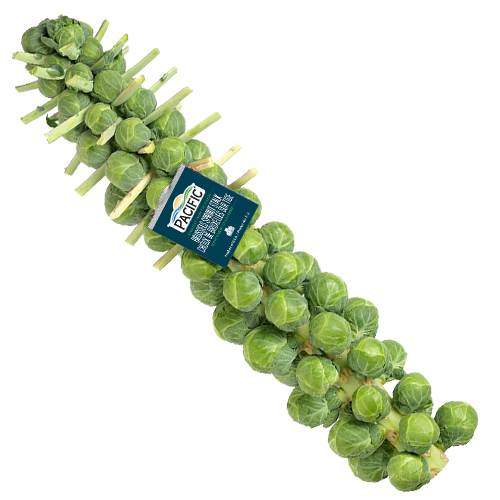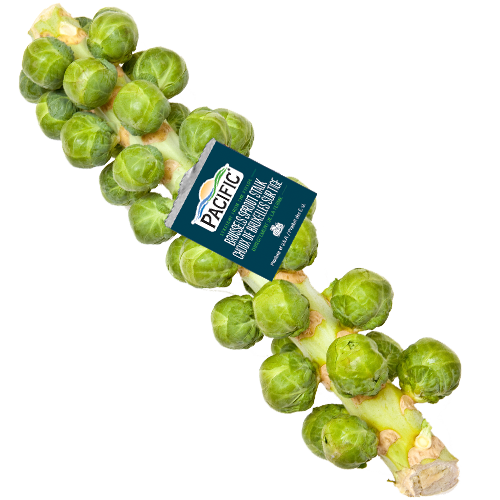BRUSSELS SPROUTS
our conventional brussels sprouts
Brussels sprouts are named after Brussels, the capital of Belgium, where they gained popularity during the 16th century. With their compact, walnut-sized heads, this cruciferous vegetable is packed full of nutrients and is an excellent source of vitamins C and K. They have a sweet, nutty flavor with a hint of bitterness. Brussels sprouts are extremely versatile and can be prepared in a wide variety of ways including roasting, sautéing, steaming, or shaving into a salad.
our growing program
We grow our conventional, field-fresh loose Brussels sprouts year-round and stalks seasonally. We offer full stalks, half stalks, 1-pound mesh bags, as well as loose.
CONVENTIONAL SEASONALITY CHART - Loose Brussels Sprouts
CONVENTIONAL SEASONALITY CHART - Brussels Sprouts Stalk
shopping
Look for Brussels sprouts that are vivid green in color and have tightly compact, firm heads. Squeeze the head, it should have very little give. Avoid Brussels sprouts that have black spots or have yellow leaves. The smaller the sprout the more tender and flavorful.
storing
Store unwashed and untrimmed Brussels sprouts in a plastic bag in the back of the crisper drawer of the refrigerator. Remove any yellow or wilted leaves first. If they are still on the stalk, do not remove them until you are ready to prepare. They will stay fresher longer if left on the stalk.
preparing
Gently remove Brussels sprouts from the stalk by pulling backward. They should snap off with slight pressure. Trim the ends and soak in warm water for a good cleaning. Discard any loose or discolored surface leaves. If cooking whole, cut a small X in the stem end of each sprout, to help the sprouts cook evenly and a bit faster.








